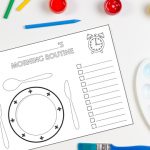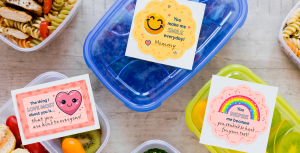Administering medication to children can often be a challenging endeavour. The reluctance stems from various factors such as unpleasant taste, fear of swallowing pills, or simply the desire for autonomy. However, ensuring that children take their prescribed medication is crucial for their health and recovery.
Let’s examine innovative and evidence-based techniques for helping your child take medication without fuss. These techniques ensure effective treatment and a stress-free experience for both you and your child.
Understanding the challenge
Children’s resistance to medication is a common issue faced by many parents. Factors contributing to this reluctance include:
- Taste sensitivity: Children have more taste buds than adults, making them more sensitive to bitter flavours.
- Fear of swallowing pills: The unfamiliarity and perceived difficulty can cause anxiety.
- Desire for control: Illness often strips children of their routine and control, leading them to resist medication as a form of regaining independence.
Recognising these factors is the first step toward implementing effective strategies.
Innovative techniques to ease medication administration
Masking the taste
One practical approach is to disguise the medication’s flavour:
- Flavour additives: Some pharmacies offer flavouring services to improve the taste of liquid medicines.
- Mixing with food or beverages: With a doctor’s approval, certain medications can be mixed with small amounts of food or drink.
Options include:
- Applesauce or yoghurt: Their thick consistency can help mask unpleasant tastes.
- Juices: Strong-flavoured juices like grape or orange can overpower the medicine’s flavour.
Note: Always consult with a healthcare professional before mixing medication with any substance to ensure it doesn’t affect the drug’s efficacy.
Utilising cold sensation
Cold temperatures can numb taste buds, reducing the perception of bitterness:
- Chilled medicine: Refrigerate liquid medications if the label permits.
- Pre-dose cold treats: Offering an ice-lolly or ice cube before administering medicine can temporarily numb the tongue, making the taste less noticeable.
Empowering the child
Providing choices can give children a sense of control:
- Decision-making: Allow them to choose between different flavours (if available) or select the dosing tool (syringe, cup, or spoon).
- Involvement: Letting children hold the medicine dispenser or participate in the process can reduce resistance.
Practising pill swallowing
For children transitioning to pills:
- Gradual introduction: Start with small, candy-sized placebo pills to practice swallowing.
- Head positioning: Encourage a slight forward tilt of the head when swallowing, making the process easier.
Empowering the child
Providing choices can give children a sense of control:
- Decision-making: Allow them to choose between different flavours (if available) or select the dosing tool (syringe, cup, or spoon).
- Involvement: Letting children hold the medicine dispenser or participate in the process can reduce resistance.
Positive reinforcement
Encouragement and rewards can motivate children:
- Praise: Acknowledge their cooperation and bravery.
- Reward Systems: Implement a sticker chart or offer a small reward after taking the medicine.
Engaging in play therapy
Incorporating play can alleviate anxiety:
- Role-playing: Use dolls or stuffed animals to simulate the medicine-taking process, allowing the child to administer “medicine” to their toys.
- Storytelling: Create stories where characters take medicine and feel better, normalising the experience.
Safety considerations
While implementing these strategies, it’s essential to prioritise safety:
- Proper dosing tools: Use the measuring device provided with the medication to ensure accurate dosing.
- Avoid misleading comparisons: Refrain from referring to medicine as candy to prevent accidental ingestion.
- Secure storage: Keep all medications out of reach to prevent accidental poisoning.
Conclusion
Administering medication to children doesn’t have to be a stressful ordeal. By understanding the underlying causes of resistance and employing creative, evidence-based strategies, parents can transform medicine time into a more manageable and even positive experience. Remember, patience and empathy go a long way in ensuring your child’s health and well-being.
Encouraging children to take medication when needed is crucial for their recovery. However, it’s essential to approach this carefully to prevent them from associating medication with treats, which could lead to unhealthy perceptions and drug addictions. Parents and teachers should educate children on the importance of taking medication only when necessary and under the supervision of a parent, doctor, or hospital staff.
Consult a doctor or paediatrician to get expert guidance and support if your child struggles with taking medication.












